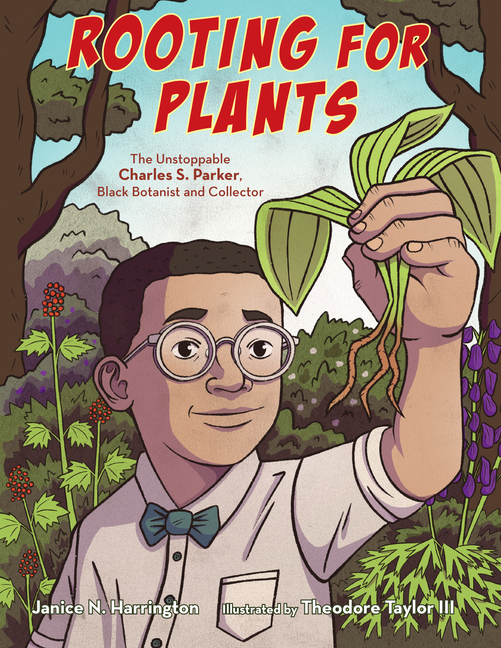Book Description
for Rooting for Plants by Janice N. Harrington and Theodore Taylor, III
From Cooperative Children's Book Center (CCBC)
Charles Parker loved nature as a child. As a young man, he served overseas during World War I and returned home to the Pacific Northwest deeply moved by both the loss of human life and the destruction of forests and plants he’d witnessed in the war. He went to school to study botany and began cataloging numerous plants of the Pacific Northwest. He also developed a method to preserve plants. Parker was hired by Howard University, where he loved teaching—and was a beloved teacher—and encouraging young Black people to become scientists. He also continued his fieldwork, exploring and chronicling plants region by region in the United States, always asking questions, and encouraging his students to do the same. The back matter of this picture book biography includes a biographical essay, a timeline, and brief profiles of other Black scientists. (Ages 6-9)
CCBC Choices 2024. © Cooperative Children's Book Center, Univ. of Wisconsin - Madison, 2024. Used with permission.


